- Home
- Alistair Moffat
To the Island of Tides Page 5
To the Island of Tides Read online
Page 5
Later in his brief account of Cuthbert’s journey to Old Melrose, Bede described his motivation in a single phrase, ‘he preferred the monastery to the world’. With his servant walking beside him, his horse’s reins in one hand and his spear in the other, the young man, perhaps only fifteen or sixteen years old, presented the perfect picture of the secular, even warlike world. In the Anonymous Life reference is made to Cuthbert at one time ‘dwelling in camp with the army’, probably having been conscripted into the royal Northumbrian host. But he was about to cast aside his spear, hand over his horse to his servant and leave the world ‘for the yoke of bondservice to Christ’. The young man would soon pass from the familiar patchwork of fields, farms and villages and cross into the sacred land.
If I was right about Cuthbert’s road to meet his destiny, it took him through the ancient hamlet of Bemersyde. No trace of the early medieval village is left, but the origins of its name point to real antiquity. It means something like ‘the hillside where bitterns call’, birds that have been described as the Trumpeters of Bemersyde. To the southeast, in a dip between two ridges, lies Bemersyde Moss, a small loch surrounded by tussocky wetland, the perfect habitat for these fishermen, relatives of the heron. The place-name is an example of transference. In Old English, the language of Cuthbert, ‘bemere’ means ‘to trumpet’; its call, instead of the bird itself, found its way onto the map. It is likely that the hamlet existed in the seventh century during the Anglian takeover of the Tweed Valley, and after I had walked out of the tree-shaded lane, the C road I had been following joined a B road bathed in bright sunshine, where its houses clustered.
Most of these are modern, strung out on either side of the road that runs east to west, and their views must be sweeping. Around each are arranged neat and colourful gardens, the deposit of much care and effort. As I passed, a dog leaped up and barked suddenly at a gate and the owner came to calm the old collie and apologise. There was no need, but what struck me was the sense of contentment the lady seemed to have as she talked about the remarkable summer and I praised her beautiful garden of roses, geraniums and hydrangeas and the pots, baskets and borders of rich colour. As I walked off down the road, I wondered about my own choices in life. A comfortable modern house with long views, a decent pension, plenty of time to indulge interests and no need to keep striving, pushing and hoping – all of that suddenly seemed very attractive, something my wife Lindsay and I could easily have opted for.
Instead, of course, we took the harder and, more than occasionally, I think, the dafter path. The joys have mostly outweighed the difficulties, but the life of a freelance and its income is precarious and has significantly diminished over time. More than once, we have had to scrape through a tough year. And at sixty-eight, I worry that my earning capacity is beginning to slacken. More and more often, I look at bungalows like those at Bemersyde and wonder about comfortable sofas, lie-ins on a weekday, playing at writing something I don’t need to finish because I don’t need the money, and joining a book group. But so far these thoughts are fleeting, driven out by the likelihood that I would soon become bored, vastly overweight and possibly over-fond of New Zealand sauvignon blanc, if I am not already. For me at least, for the moment, hard work, no holidays, only the occasional day off and bouts of intermittent anxiety are probably healthy.
And probably inevitable. Just as Cuthbert may have been surrendering to his essential nature, recognising that his piety, his wish to leave the world and strive to know the mind of God, would always prevail over his inherited status as an aristocrat of some sort, so I have begun to realise that I could have lived no other sort of life. I am a risk-taker, someone who sees how well things can turn out and never seriously considers how badly wrong they can go, or if that sounds a little melodramatic, someone who could not bear to be too safe and take refuge in the false securities and certainties of routine. I could not have stayed in a salaried job, served my time until my pension had fattened up, for I would have lost my life if I had wasted all those years just turning up every Monday morning, ticking off the months and years until retirement, wishing my life away.
Instead, I took the risk of depending on myself, not leaning on the support of an institution, and trying to make a living from what was in my head. I don’t much care if that sounds self-aggrandising or even puffed-up; it is nothing less than the truth. I had to be true to my nature – although that sounds a little pat and premeditated. At the time it didn’t feel like that, it was just something I had to do. Even though I had not properly thought out the consequences of diving into the depths of uncertainty twenty years ago, I knew I had to get out of corporate life and accept all the insecurities that came with that decision. And even though the life of a freelance is very dependent on the wishes, whims and appetites of others, those who commission our work or grant money to support it, I suppose I am content with the conditional truth that I have at least been my own man.
But alternative choices can sometimes be surprising and illuminating. At the end of 2017 I met a man I had not seen for fifty years. We played representative schoolboy rugby together in the Borders before he went off to Edinburgh University to take a degree in geology and then a job with De Beer in South Africa. Very dashing, but certainly uncomfortable and almost certainly risky, as well as a radically different choice from mine to stay and make a life in Scotland. When we met for supper in Melrose, I worried that we would have little or nothing to say to each other. In fact, it turned out to be fascinating.
Alone for weeks on end in the African bush, taking sample cores, looking for likely places where diamonds might be mined, my old rugby-playing friend often found that he had spoken to no one for long periods. Instead, he began to read the novels of Walter Scott in publication sequence, and not only worthwhile in itself, it was a habit that reconnected my friend with the Borders. The famous Scott quote, ‘Breathes there the man, with soul so dead, Who never to himself hath said, This is my own, my native land!’ was precisely apposite. My friend’s mother is still alive and he flies north from his home on the coast near Cape Town to the Scottish Borders at least two or three times a year. His connection to our home-place is powerful. As is mine. When I resigned my job, there was no other choice I could consider except to come home, to return to the sacred land.
Continuity and attachment to place are rarely more evident than in the story of Bemersyde House. Turning downhill from the hamlet, I passed its gates and saw the sixteenth-century tower house in the distance. The same family has lived there for eight centuries since it came into the possession of a Norman warrior called Petrus de Haga. By the late thirteenth and early fourteenth centuries, the name had changed slightly but become so established that Thomas the Rhymer could recite:
Tyde what may,
Whate’er betyde
Haig shall be Haig of Bemersyde.
And so it has come to pass. Alexander, the grandson of Field Marshal Earl Haig, the commander of the British army on the Western Front during the First World War, now lives in the old house.
Below the gates, the road begins to run down gently off the ridge and becomes deep and heavily shaded, a sign of real antiquity, since it has sunk far below the level of the fields beside it simply because of the centuries of feet, hooves and wheels, the tread of people, horses and the ruts made by carts. Powerful knots of tree roots cling like octopuses to the high banks and their thick foliage shades the road for a few hundred yards. It eventually leads to an oddity, a dissonance.
When the sixteenth century and the Reformation signalled the end for Scotland’s monastic communities, abbeys often fell under the control of commendators, usually aristocrats who eventually appropriated their lands. The holdings and power of many aristocratic families are built on the patrimony of the church. The Erskine family, earls of Buchan, were given Dryburgh Abbey and much of the nearby property that had been gifted to the monks over many years. By the early nineteenth century, David Stuart Erskine, the 11th earl, had become fascinated, even obsesse
d by Scotland’s history and heroes. He founded the Society of Antiquaries, whose collections formed the basis of those of the national museums of Scotland. Walter Scott knew Erskine well and was uncharacteristically ungenerous, saying that he was a man whose ‘immense vanity obscured, or rather eclipsed, very considerable talents’. On that sunny day below Bemersyde, it seemed to me that an understanding of what made good art was not amongst them.
The deepened lane leads downhill to a brown sign on the left that points to ‘Wallace Statue’. At the end of a winding wooded track, perched on a high, precipitous bank, is a monstrous red sandstone sculpture of one of Scotland’s great heroes. William Wallace, the victor of Stirling Bridge in 1298, stands twenty-one feet high on a ten-foot plinth, staring sightlessly westwards over the Tweed Valley. Made by a local sculptor, John Smith of Darnick, no doubt to a precise prescription from the Earl of Buchan, it could never be mistaken for the work of Michelangelo. In fact it is profoundly ugly. Holding a broadsword almost as tall as himself in one hand and a shield bearing the device of the Saltire in the other, the hero looks more than a little gormless, a slightly puzzled expression above his bushy beard, as though he were lost. On his head, and therefore difficult to make out from thirty-one feet below, a version of an iron helmet that owes more to the Wehrmacht than anything medieval has some sort of winged creature attached. Perhaps a pigeon. Mercifully, the hardwood trees around this thoroughly duff object have begun to hide it. From a distance, to the west, all that can be made out is the head – until autumn sheds the friendly leaves.
Further down the road to Dryburgh Abbey I came across something much more eloquent, a fragment of cut stone that was definitely more pleasing, clear confirmation that people had walked and ridden this way for very many centuries. Easy to miss in the left-hand verge, hard against the edge of the tarmac, sits a cross socket. Now filled with rainwater, it once held a tall and impressive cross that offered a place to pray and that marked a boundary. Abbeys, priories, convents, churches and other places of pilgrimage often lay inside a wide precinct whose outer limits were fringed by crosses set up by the sides of the roads that led to the sacred sites. Around Coldingham Priory on the Berwickshire coast, founded in the mid-seventh century and a place Cuthbert visited, there were at least three crosses at three approaches: Applincross, Whitecross and Cairncross. No more than this unconsidered little stump survives from Dryburgh, but there must have been others. When Cuthbert rode past it, he left the temporal world and entered holy ground.
Before a long avenue of trees wrapped the road in shadow, wide vistas to the south and west opened over the rich, pale yellow of ripening barley. Rain was gathering in the west, a grey veiling drifting across the hills of the Ettrick Forest and the shelter of the deep lane made it difficult to judge where the wind blew. I quickened my pace downhill to Dryburgh, noticing that gaps in the trees to my right showed what an ever-present landmark Eildon Hill North was. It seemed to be following me around the landscape.
Dryburgh is the only one of the four Border abbeys not found in a town and consequently its fabric is more complete, having suffered much less at the hands of stone robbers. After the Reformation, the masonry of the great churches at Kelso, Melrose and Jedburgh could be seen in the walls, and no doubt the foundations, of nearby houses. Sheltered by stands of ancient trees – one yew is said to have been planted by the monks in the early twelfth century – and surrounded by a vallum, a ditch deepened in modern times to keep out grazing and browsing animals, Dryburgh Abbey is a very romantic ruin, and also strange, other-worldly.
Many years ago I made a television series called The Sea Kingdoms, the story of Celtic Britain and Ireland. We filmed in Cornwall, Ireland, the Western Isles and in Wales. On our way out to St David’s in Pembrokeshire, surely the only cathedral village in Europe, we took a detour to a place associated with another early holy man, St Justinian. According to the map, near the coastal hamlet was an interesting series of prehistoric remains, a small stone circle and a dolmen, a megalithic tomb of two upright stones that supported a horizontal capstone. I thought some shots of these against the sea might be useful in opening credits.
The landscape was patterned by a warren of narrow paths threaded between rocky outcrops and tall clumps of impenetrable gorse. It was easy to become disoriented. Near the dolmen, we came across an unexpected small cottage with a fenced front garden full of colourful wooden objects: stripy posts, a large doll and a cart. Bunting fluttered on some of them. As our camera and sound men gratefully put down their kit, my director and I knocked on the door. Perhaps we were trespassing and needed permission to film. There was no answer at first, and then I began to make out a low drone, almost like a growl but not something that sounded like a guard dog. When there was no answer and we retreated, it was replaced by a high-pitched whine, a keening that slowly built up but did not seem to come from the cottage.
After exchanging glances, we walked back to the dolmen, wondering what we might meet around each corner of the path, shot some general views, packed up our kit and walked, quite quickly, back to the cars. More than strangeness, this little enclave in the landscape had a powerful atmosphere, something malign, and even though it was a bright day, good for filming, we all felt uncomfortable and were relieved to park at St David’s and set up our next sequence of shots amongst the crowds.
Dryburgh’s strangeness is not malign, it seems to me, but it is not a place of settled peace either. For some who visit, God may be close, but I had a powerful sense of other presences, perhaps the spirits of the pagan past were flitting in the shadows of the old trees. The early history of the abbey and its site is scant but it might cast a dim light on these competing impressions.
All of the original locations of the great twelfth-century monastic foundations in the Borders are to be found in the loops of rivers. Jedburgh Abbey rises above a sinuous bend in the Jed Water while Dryburgh, Kelso and Old Melrose are all bounded in part by loops in the course of the Tweed. Such a wide and deep river was a real barrier for millennia, until the bridge-building of the modern age, and it offered a degree of seclusion, a clear division between the temporal and the sacred worlds.
Early Christians were attracted to sites like these because they were impressed and inspired by a group of ascetics known as the Desert Fathers. Perhaps the best known in sixth- and seventh-century Western Europe was St Anthony of Egypt. Copies of his Life, written by St Athanasius of Alexandria, found their way to Britain and Ireland, and scholars believe that both Bede and the anonymous biographer of Cuthbert were able to consult this short but remarkable text. It relates how in the late third century Anthony was raised in a Christian household of some considerable means. When both his parents died, he seems to have had an epiphany. Giving away all of his inherited wealth, a farm of 300 acres and much else of value, he put his younger sister into a convent and embarked on a life of piety and asceticism. After many battles with the Devil and his legions of demons, he sought a solitary life, shutting himself up in a tomb at one point, starving himself and forcing himself into cycles of prayer and vigil. Although Athanasius nowhere states this explicitly, there is a sense threading through the narrative (and others) of the hermit using mortification of the flesh to induce a trance-like state so that he might have out-of-body experiences, something that may have seemed to detach his immortal soul from his worldly flesh. This appears to have been a continuing practice amongst these early saints.
Eventually, Anthony fled to the deserts beyond the fertile valley of the Nile to pursue a life of solitude that might draw him nearer to God. But his fame had spread and, according to Athanasius, ‘cells arose in the mountains, and the desert was colonised by monks who came forth from their own people . . . and he directed them like a father’. And then Anthony retreated even further, to a holy mountain, his ‘inner mountain’, where he lived out the rest of his harsh life. Surviving the persecutions of the Emperor Maximinus II in 311, he died some time later after giving instructions that his body was to
be buried in secret so that it could not become a focus for reverence or pilgrimage, something else that would be clearly echoed at the end of Cuthbert’s own life.
The teachings and habits of the Desert Fathers inspired early Irish monks to seek places apart from the world, places of solitude with no worldly distractions. In a Gaelic rendering of deserta, they called their hermitages and communities dìseartan and it is a description that survives in the Scottish place-name of Dysart on the Fife coast, Dyzard in Cornwall, several Dyserths in Wales, and many Diserts in Ireland. Celtic monks let water, both salt and fresh, take the place of the sands of the Egyptian and Judaean deserts, and in the loops of the River Tweed at least two and perhaps four disearts were established in the sixth century as the spirit of Anthony reached across a continent.
Some time around 522, before Columba sailed to Iona in 563, an Irish monk called Modan came to Dryburgh, where he appears to have settled for a time. The son of an Irish sub-king, he has left shadowy traces of his journeys around Scotland. Ardchattan near Loch Etive was once Balmodhan, the settlement of Modan, Kilmodan on the Isle of Bute was his church, St Modan’s High School in Stirling remembers his presence in the Forth Valley, and his relics are said to have been enshrined at St Modan’s Church at Rosneath, across the Gare Loch from Helensburgh. In September 2015, local archaeologists rediscovered St Modan’s Well in the woods above Glendaruel in Argyll and found pebbles of bright quartz around it that had been left by pilgrims who had come to pray there and seek his blessing over many centuries before the Reformation.
At Dryburgh nothing remains of Modan’s presence except for the faint echo of a story. Having reluctantly taken up the office of abbot, he resigned and left the monastery so that he could be free to follow the life of a hermit over in the west of Scotland, near Dumbarton. Given that his relics found their way to Rosneath, it is reasonable to suppose that the Irishman died there. All of these references and locations suggest that the widely travelled monk was a real pre-Columban presence in the Borders, even though no material or documentary record of him can be found.

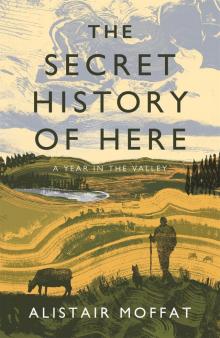 The Secret History of Here
The Secret History of Here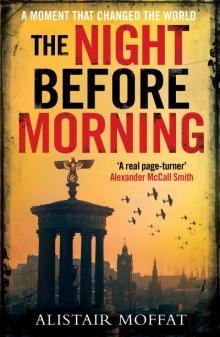 The Night Before Morning
The Night Before Morning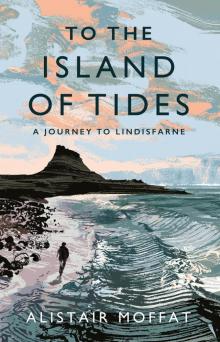 To the Island of Tides
To the Island of Tides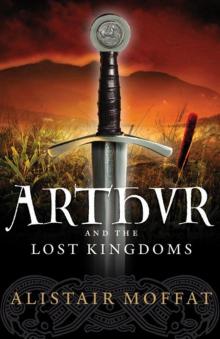 Arthur and the Lost Kingdoms
Arthur and the Lost Kingdoms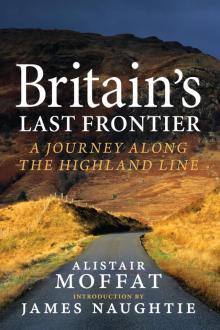 Britain’s Last Frontier
Britain’s Last Frontier The Faded Map: The Lost Kingdoms of Scotland
The Faded Map: The Lost Kingdoms of Scotland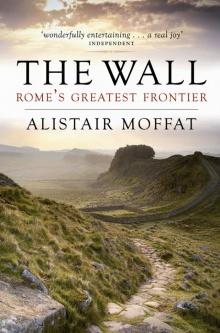 The Wall
The Wall